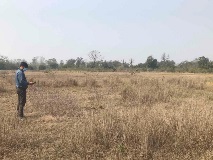SEPAL’s goals are to support countries in their efforts to halt tropical deforestation and degradation, and to enhance reforestation and restoration by:
- providing a free, easily accessible, powerful platform for efficient geospatial data access and customized processing;
- enhancing global capacity to operationally apply high-resolution satellite images to critical forest and land monitoring issues; and
- building country capacity in high-resolution satellite imagery applications for critical forest and land monitoring issues in response to domestic policy needs.
The project will directly benefit 64 countries through different capacity-building modalities toward autonomous use of the data for key forest and land monitoring needs. In addition, some countries will receive targeted support and commitment, leading to the institutionalization of data use at the national level, thus strengthening institutional arrangements and linkages to policy formulation, implementation and evaluation through capacity development at the national level.
.png?sfvrsn=c21855b4_5)
SEPAL highlights June 2023
Check the progress of SEPAL activities over the last 18 months
SEPAL application in the field

Forest Restoration Planning in Nepal
02/05/2022
Se.plan is a key decision support tool for forest restoration planning, available through SEPAL. The Ministry for Forests and Environment in Nepal is using se.plan to generate forest restoration suitability maps that match their priorities while also going into the field to determine the eligibil...

Assessing Land Degradation in Bangladesh
01/03/2023
The influx of nearly one million Rohingya refugees and other forcibly displaced peoples from Myanmar since August 2017 has made Cox's Bazar – the southernmost coastal hill district of Bangladesh – home to one of the largest refugee camps in the world.

Detecting Forest Change from Restoration Activities in Uganda
07/03/2023
The FAO and National Forest Authority (NFA) of Uganda used SEPAL to monitor forest restoration activities in selected sites of Central Forest Reserves (CFRs) managed by NFA. FAO and NFA used SEPAL to develop a methodological approach that could be scaled to monitor restoration activities at a landscape level.

Developing an Innovative Peatlands Monitoring System in Indonesia
2021
Peatlands cover only 3 percent of global land area but store nearly 30 percent of the world’s soil carbon, and may contain twice as much carbon as the world’s forests. Innovative FAO SEPAL satellite data processing modules were designed to produce vegetation-cover change maps and estimates of soil moisture across the peatland landscape, to assess peatland changes and the progress of their restoration impacts.

Integration of SEPAL into Uganda's National Forest Monitoring System
2023
This case study summarizes the experience of the use of System for Earth Observation Data Access, Processing and Analysis for Land Monitoring (SEPAL) in Uganda by the National Forest Authority (NFA) and its integration into the National Forest Monitoring System (NFMS), as a result of a long-standing partnership that began in 2013 between Uganda’s.
